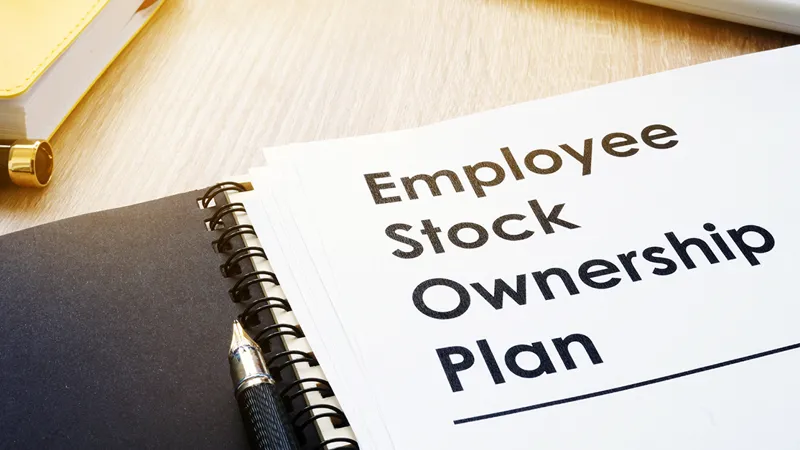An Employee Stock Purchase Plan (ESPP) is a benefit offered by many public companies that allows employees to purchase company stock at a discounted price, often through automatic payroll deductions. ESPPs can be a powerful tool to build wealth over time when used strategically, especially for employees aiming to invest in their company while optimizing tax benefits.
How ESPPs Work
Employees opt into the ESPP during specified enrollment periods and select the percentage of their paycheck to contribute. Contributions are then deducted automatically from your paycheck throughout the offering period. Shares are purchased at a discount, usually 5%–15%, and many plans include a "lookback" feature, allowing you to buy at the lower of the stock price at the start or end of the period. Once you purchase shares, they are yours. Depending on your plan, you may sell immediately, or after a holding period to maximize tax advantages.
Benefits of Participating in an ESPP
Participating in an ESPP offers discounted stock purchase by buying company stock below market price which leaves more opportunity for capital appreciation if the stock value increases. ESPPs are relatively convenient as contributions are automatically deducted from paychecks and are spread across pay periods. Qualified ESPPs can have tax advantages when holding periods are met. Learn more about what business executives should know about equity compensation here.
Tax Considerations
Qualified and Non-Qualified ESPPs have different tax implications. Qualified ESPPs require the employee to hold shares one year after purchase and two years after the offering date for favorable tax treatment. Gains are then taxed at long-term capital gains rates for the difference between sale price and purchase price if requirements are met.
The discount received when purchasing the shares in a non-qualified ESPP is considered income atthe time of the purchase and taxed accordingly. The gain above the discount will be treated
according to short term capital gains and long-term capital gains rules. Careful planning with a financial advisor can help minimize taxes and optimize gains.
Risks to Consider
While there are many benefits to ESPPs, it’s important to also be aware of the risks. Over-investing in company stock increases exposure to company performance, which is great if the company increases in growth but during company downturns if you are overly concentrated in company stock you may also see negative impacts. Purchasing company stock at a discount does not always guarantee profits, so it’s important to keep an eye on company financial health, and to be confident in the company’s ability to grow. There are also tax complications if you decide to sell your shares early which can lead to higher taxes.
Strategies to Maximize Your ESPP
To maximize your ESPP you’ll want to align participation in the ESPP with other financial planning priorities and be sure to assess your contribution percentage to ensure it helps reach your long-term goals. Your ESPP should just be one part of your larger financial plan, so be sure to avoid excessive company stock and exposure in your portfolio. You’ll also want to optimize your holding periods and plan sales strategically to reduce taxes. Working with a financial planner will help you to maximize your ESPP with personalized guidance on how to integrate ESPP decisions into your overall wealth plan.
Who Should Participate in an ESPP?
ESPPs are ideal for employees who want to build wealth over time and take advantage of discounted stock purchases. Strategically integrating company stock into your investment portfolio is a great way to show company support while diversifying your portfolio.
Frequently Asked Questions (FAQs)
Q1: Can I sell my ESPP shares immediately?
It depends on your plan rules. Some allow immediate sale, while others require holding periods to qualify for tax advantages.
Q2: How much should I contribute to an ESPP?
Contributions are typically 1%–15% of your paycheck. A financial advisor can help determine an amount that balances growth and risk.
Q3: Are ESPP gains taxed?
Yes. Qualified ESPPs offer favorable tax treatment if holding requirements are met. Non-qualified ESPPs may have ordinary income taxation on the discount.
Q4: What is a “lookback” feature?
A lookback allows you to purchase stock at the lower price between the offering start date and the purchase date, increasing potential gain.
Q5: Should I keep or sell ESPP shares after purchase?
Holding shares can maximize long-term gains and tax benefits, but it increases exposure to company-specific risk. Diversification and planning with an advisor are key.
Work With a Financial Advisor
ESPPs can be a powerful tool for wealth building but strategic planning is essential. A financial planner can help you:
-
Determine optimal contribution levels
-
Manage tax implications
-
Mitigate stock concentration risk
-
Integrate ESPP holdings into your long-term financial plan
Book a consultation with a financial planner today to learn how your ESPP can fit into your overall wealth strategy.
Wealthspire Advisors LLC, Fiducient Advisors LLC, Wealthspire Retirement, LLC dba Wealthspire Retirement Advisory, and certain other affiliates are separately registered investment advisers. © 2025 Wealthspire
This material should not be construed as a recommendation, offer to sell, or solicitation of an offer to buy a particular security or investment strategy. The information provided is for informational purposes only and should not be relied upon for accounting, legal, or tax advice. While the information is deemed reliable, Wealthspire Advisors cannot guarantee its accuracy, completeness, or suitability for any purpose, and makes no warranties with regard to the results to be obtained from its use.


